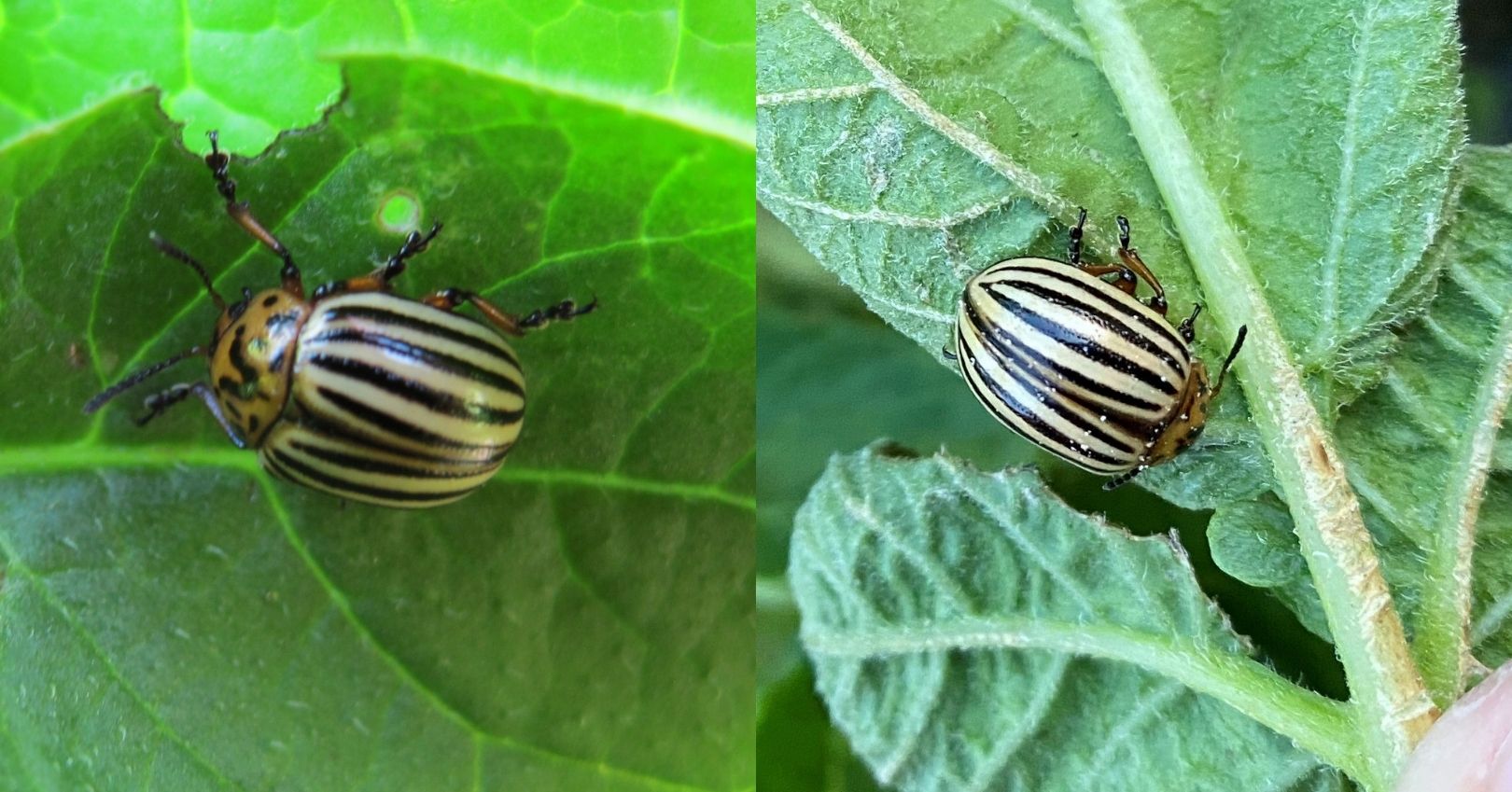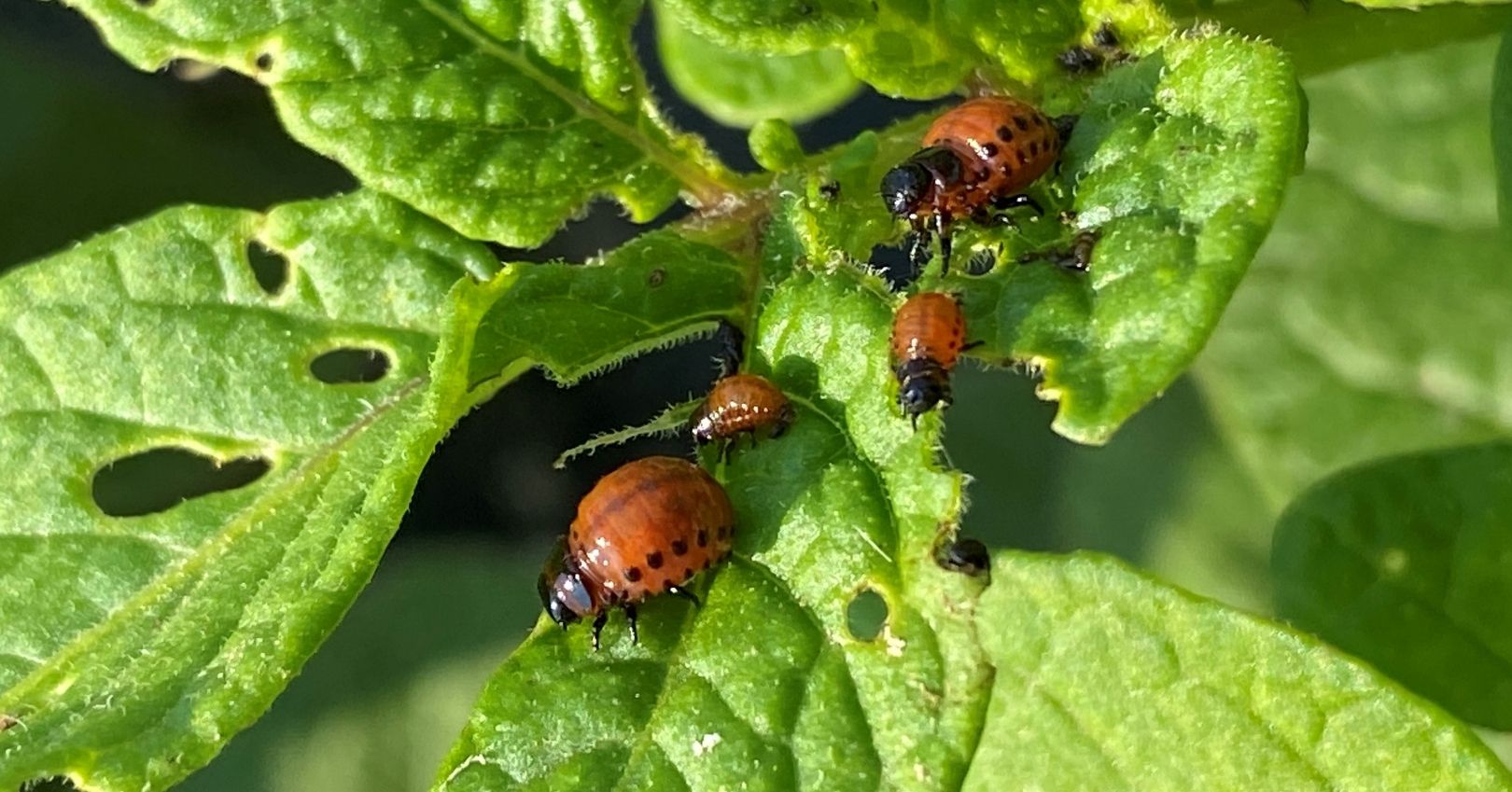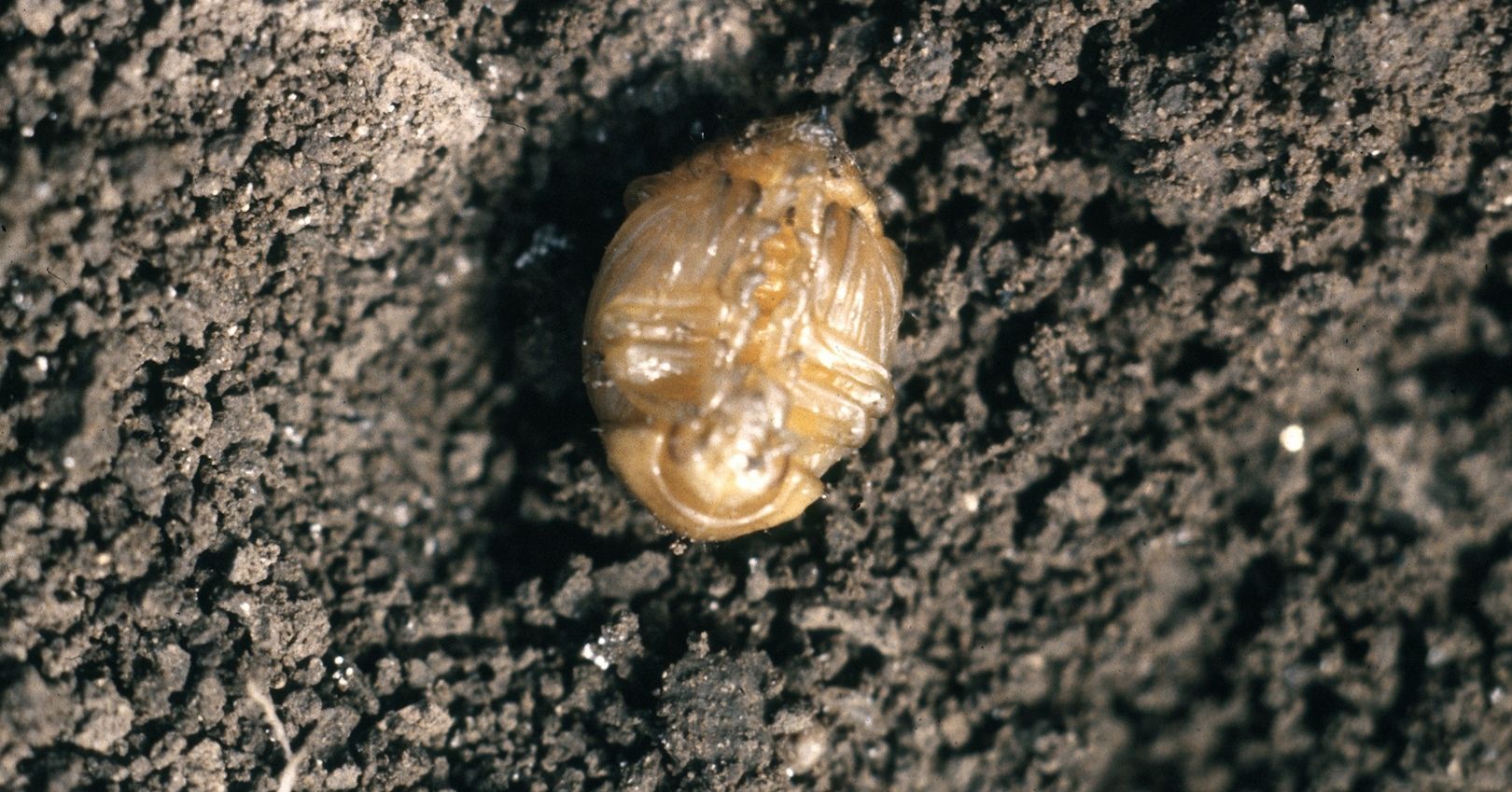Colorado Potato Beetle




Description
Adult: Similar size (3/8 inch long) and shape as lady beetle, but with yellow and black stripes.
Egg: Small, bright yellow to orange ovals laid in clusters of about 20-45 on the underside of leaves.
Larva: About ½ inch long when mature. Small bulbous larvae that are reddish in color with two rows of black spots along the side of the body.
Pupa: Oval in shape and cream to orange in color.
Life History
Overwintering adults emerge from under plant debris and in the soil around May in northern Utah. Females lay clusters of eggs on the undersides of leaves of potato, tomato, pepper, eggplant, nightshade, and other solanaceous plants. Larvae feed for 10-30 days, and then pupate in the soil. There are 2-3 generations per season.
Damage
Colorado potato beetle (CPB) adults and larvae feed on foliage and can defoliate plants if not controlled. The last (4th) instar larva causes most of the feeding damage. Potatoes in the vegetative stage can usually tolerate up to 30% defoliation, but when tubers start to bulk, plants can tolerate no more than about 10% defoliation. Thus, it is crucial to manage CPB soon after flowering as this is when tuber bulking begins. Other CPB hosts include eggplant, tomato, pepper, and other nightshade or solanaceous plants.
Monitoring
Start monitoring fields at crop emergence for the presence of CPB. Larvae prefer to feed at the tops of plants making it simple to scout by checking these areas when walking through fields. Because small populations are easier to manage than large ones, the goal is to limit population growth and spread.
Management
Cultural
- Crop rotation and sanitation. Crop rotation delays and reduces infestations. If potatoes follow potatoes, overwintering CPB will immediately infest the new crop. Destroy any solanaceous plant residues that may provide alternate food sources.
Biological
Damsel bugs and big-eyed bugs feed on eggs and young larvae; predatory stink bugs will attack larvae. Two bioinsecticides are effective on young larvae: the bacterium, Bacillus thuringiensis var tenebrionis (Bt), and the fungus, Beauveria bassiana.
Chemical
CPB has developed resistance to nearly every class of chemicals. Thus, it is critical to carefully rotate insecticide modes of action. In spring, wait until eggs have hatched for the first application. Border sprays may provide a more economical choice, especially early in the season before populations increase and spread throughout fields.
Several economic treatment thresholds have been developed. In general, 1 adult or larva per plant early in the season may warrant control. After flowering/ tuber bulking, treat when there are an average of 1.5 large larvae or adults per plant.

